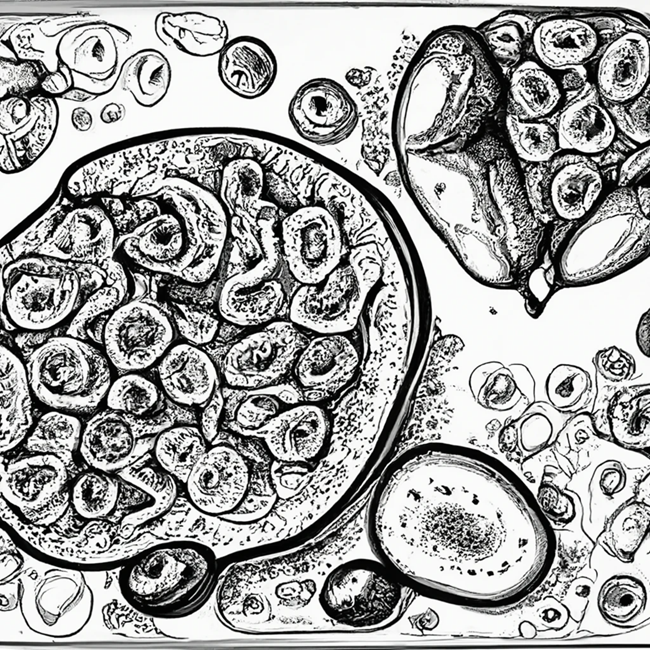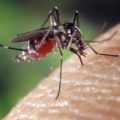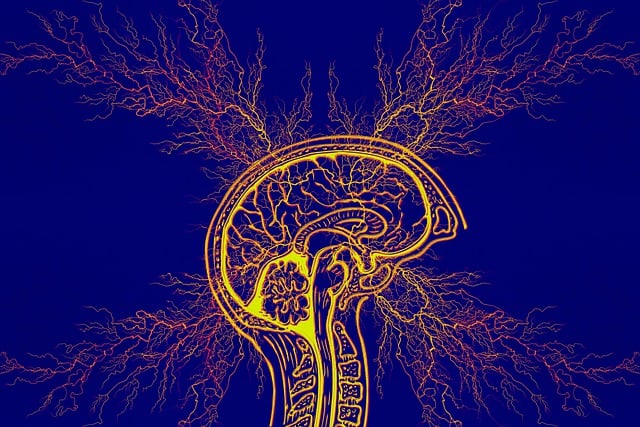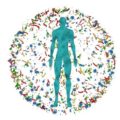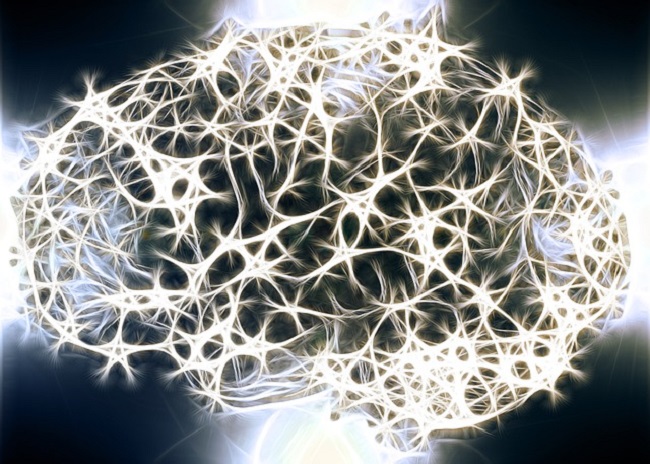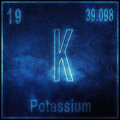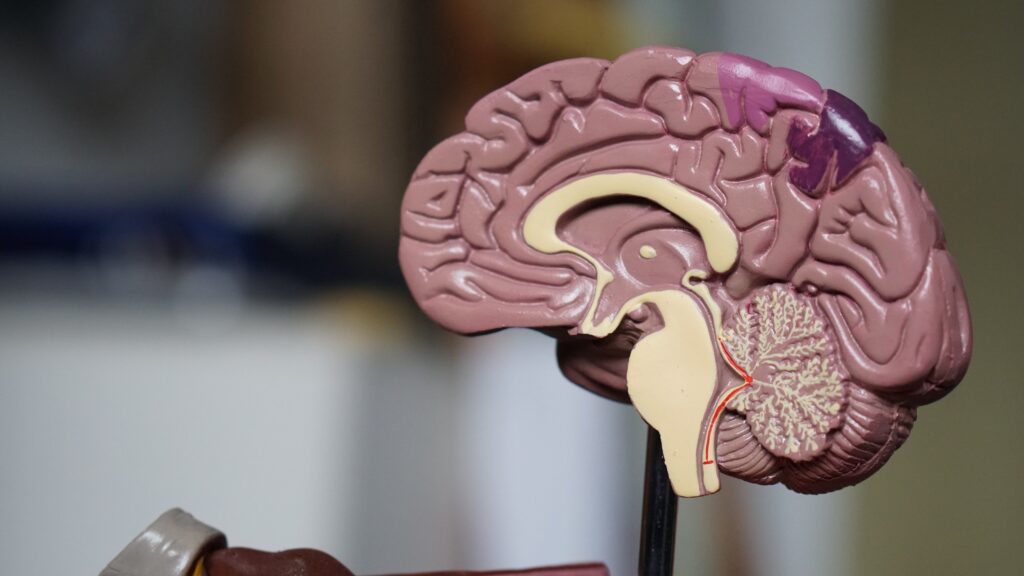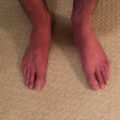I’m a 36 year old male and I’ve probably been thiamine deficient my entire life. Everything about my body has always just been a little bit different compared to everybody else. I was always weaker, less coordinated, skinny, sickly, slow, low testosterone, always clammy to the touch, prone to mood swings, occasional hallucinations, and nightmares every single night. This was the only experience I knew and it never occurred to me that any one particular thing could be the underlying cause for this rogue’s gallery of symptoms. I took these challenges in stride, worked hard to overcome them all, and for the most part was a reasonably healthy person. However, nothing could prepare me for the nightmare experience that is dry beriberi deficiency caused by a parasitic babesia infection.
At age 33, my body began to rapidly deteriorate and present a wide variety of confusing symptoms such as intense nerve pain, aching joints, rapid temperature fluctuations, full blown panic attacks that made me want to pass out, confusion, upset stomach, nausea, vertigo, and mild hallucinations again. I went from being relatively healthy to having all of these symptoms in less than 72 hours. This was the start of a 3-year medical odyssey to discover the cause. I got very lucky with tests twice during this journey. At the 2-year mark a neurologist discovered that I was thiamine deficient. Then, at the 3-year mark, my internist discovered that I likely had a parasitic infection of babesia. This is my story.
Early Childhood Illness, Abuse, and Diet
I was born jaundiced and generally very sickly. This shouldn’t have been surprising given that my mother smoked and drank during the pregnancy. The first 3 months of my life were marked with difficulty eating and or keeping food down. In my early childhood, let’s say the ages before 7 years old, I was also prone to frequent ear infections and never grew out of wetting the bed.
My home life was also very abusive. I suffered from lots of neglect, emotional abuse, physical abuse, and thankfully only mild sexual abuse. Given the bad environment, I adopted a number of violent maladaptive behaviors and psychological issues. The night terrors came first. Then I started to hallucinate and see ghosts or demons. It was mostly visual hallucinations but every now and then they would talk or communicate without words. My extremely evangelical caregivers were not impressed by this and finally brought me to a series of psychiatrists.
I was given varying diagnoses which included Oppositional Defiant Disorder, antisocial personality disorder, borderline personality disorder, ADD, and/or schizophrenia. I was forced to take six different SSRI or antipsychotic meds before I was 12 years old. The only one I can actually remember is Tofranil (Imipramine), which I would later learn causes thiamine deficiency.
During this time I also started to experience rather severe migraines and rapidly decreasing visual clarity. My optometrist thought that he had discovered a massive tumor in my head but thankfully it was just a pseudotumor. This is another rare disorder that I did not fit any of the traditional demographics for. I would later learn that this is a symptom both of thiamine deficiency and several tick-borne illnesses. The pseudotumor was treated with bimonthly spinal taps such that I had received at least a dozen before I had turned 12. Some of them had to be anesthetic free for some reason too. After I began to get uncooperative with the spinal taps, the doctors recommended loop diuretics. This is another thing that I would later learn drains thiamine from your body.
The loop diuretics forced and unexpected change upon my system and highlighted a problem that I had never really considered before. Prior to being on diuretics I was drinking somewhere between 6 to 10 sodas per day, usually Pepsi or ginger ale. This was on top of eating a diet of mostly processed foods and desserts at every single meal. All of this was very normal to my parents and grandparents who were Boomers and Greatest Generation respectively. They didn’t grow up on high fructose corn syrup and probably didn’t have the best understanding of the danger that processed foods brought. I don’t know how much of my problem was influenced by soda, but I do know the soda definitely didn’t make things better. Looking back, this kind of diet is absolutely insane. However, it was also very common in my community and so I never thought to question what I was eating.
At age 13, I contracted pneumonia but did not have a caregiver at the time. I just had to deal with it for a couple of months. This would eventually lead to a change of custody and a massive change in medications. My father is a traditionalist and he never believed in any of the SSRIs that my mother had me take. When I moved in, I was cut off from all medication entirely including the diuretics. I stopped wetting the bed after 3 days and have never done so again. I also began to quite rapidly feel better.
Despite all of this, my teen years were comparatively more normal. I played football despite not being particularly athletic and hurt my back in a way that would catch up to me decades later. My mood leveled out and my hallucinations faded. I did have an atypical puberty. For some reason I developed gynecomastia and had no facial hair. I was always skinny and it was much harder for me to build muscle than it was for the other guys. I was also almost always cold even at extremely high temperatures. I found myself getting sick and shaking in 72F. However, weirdly I almost couldn’t feel hot at all. Little did I know then that many of these issues were probably symptoms of low testosterone which was probably caused by the low thiamine.
Insomnia, Nightmares, Zoloft, and Exceedingly Low Testosterone
I suffered from really bad insomnia in college because I was terrified of going to sleep. My nightmares were so bad that I preferred just being awake. They were also very specific and complex.
Much later I would be prescribed Zoloft for depression, which is yet another thing I can drain thiamine from your body. It worked quite well until I missed six doses due to travel. Afterwards, I could never quite get back on the medication right. I wanted to discontinue use of Zoloft but my psychiatrist insisted on doubling or tripling the dose instead. We had a disagreement and because of that I was forced to quit Zoloft cold turkey at age 29. It was a profoundly miserable experience and at the time the worst thing that I had ever felt. It was much worse than child abuse.
It took me about 6 months to stabilize from Zoloft withdrawals and then something else weird happened. I started showing symptoms of bipolar disorder but mostly mania. I was extremely aggressive, energetic, could not sleep at all, and hypersexual. I still had my intelligence about me so I noticed these changes and I knew something was wrong but didn’t know what.
I took the advice of a friend and decided to also get my testosterone levels checked. The testosterone tests revealed a level of 34ng/DL. For reference, this is off the charts low. This isn’t even 10% of what would normally be considered low. I also recognize that my symptoms of extreme energy and hyper-sexuality are kind of the opposite of what you would expect from low testosterone. Thankfully a urologist treated this with Clomid and anastrozole. Symptoms disappeared almost overnight.
The next year my L5 S1 facet joint broke and I suffered a debilitating disc slip for seemingly no reason. My only guess at this point is that perhaps I suffered an injury from football that only manifested itself later as an adult, or perhaps my body was truly failing and I didn’t know it. It took 18 months to reach full recovery, but I did achieve a near miraculous full recovery thanks to disciplined exercise.
The Bottom Falls Out
All of the aforementioned struggles combined pale in comparison to what awaited me in the winter of my 33rd year. My urologist instructed me to discontinue use of both clomiphene and anastrozole without any weaning. I think this stress on my body was the straw that broke the camel’s back. About three months after discontinuing the use of my medication, my entire body basically went on strike within 72 hours.
It started mildly with just a feeling of being more tired than usual. Then I started having a hard time keeping my food down. Next I noticed that my joints were starting to sprain somewhat easily and I was almost always cold. The symptoms were milder than most seasonal colds and were maybe comparable to just not getting enough sleep. Then suddenly, out of nowhere, on day three I had the most intense panic attack of my life. It was the most intense fear that I have ever felt. I felt that I was imminently about to die and that these were my last moments. The fear was deep and profound as if my body was recognizing some important process just got turned off but I had no idea which one or how to fix it. This attack also immediately coincided with vertigo bad enough to force me to lay down on the floor and wait for it to pass. Thankfully, the entire event lasted less than a minute. Sadly, it would not be the last time this happened.
I would continue to have panic attacks similar in nature to this over the next few months. My mental health almost immediately crumbled despite my best efforts. It felt like the emotions of agitation, irritation, and paranoia where artificially cranked up to their maximum. My mind was moving a million of miles per hour but it was mostly some sort of deep irrational fear. To make matters worse, after the first day I was hit by not fatigue but rather full blown exhaustion that left me nearly unable to move. Then the cold spells hit.
My body started going through hypothermic episodes for no clear reason. I would drop from 97.7F (my normal) down to his low as 94.8F within a matter of minutes. I only know this because my wife is a former nurse who decided to take my temperature after I had complained enough. After seeing sub 95F temperatures her expression went from frustration to deep concern. Hypothermia was a painful experience that would also light up all the nerves in my hands and feet. It often came with mental confusion, agitation and at least a few times hallucinations. Seemingly nothing could warm me up either. No amount of blankets or clothes or heating pads made any difference. The only thing that seemed to work was a really hot bath and that would only work while I was in the hot water. These episodes were scary.
The next day, I started to experience burning feet. Both of my feet suddenly felt weak and as if they were being burned by a cold fire or perhaps an electrical burn. I had no idea of what was going on at the time but this is actually a classic symptom of dry beriberi onset. At this point everything was just way too intense and I felt like I had to seek medical care. This was the start of a very long medical odyssey.
Over the next 6 months I would bounce around between about a dozen different specialists who had various degrees of skepticism about my symptoms. A truly huge number of doctors were instantly dismissive. I got a lot of hand waves of this just being stress, or a mental disorder, or that I just need to take a vacation. The dismissal of symptoms became even more prevalent when every test I was given indicated not only that nothing was wrong but that my blood work was much healthier than normal. Eventually, I saw a pituitary endocrinologist who felt that the symptoms I was experiencing could be related to the testosterone drop. So we did a series of labs while on Clomid and then while off of Clomid to see if anything was being pushed out of balance. There was absolutely no difference between the tests, other than T levels, but I felt much better on Clomid. I felt like I had been cured after resuming Clomid for about 2-3 months. Sadly, this was a false hope. Before we move on to the next section I wanted to mention my back again. During the 6 months of dealing with exhaustion and various body pains every day, I was not able to maintain my disciplined exercise schedule. So while nothing was injured during that time, I now realize almost all of my supporting muscles were probably very weak.
A New Low
My wife convinced me to go on vacation to celebrate my recovery into good health. This might be the last vacation that I ever will ever get to take. About two days into the vacation, my left hand suddenly got De Quervain’s tenosynovitis. My right wrist started suffering from severe tendonitis about 12 hours after that. Then I started feeling a burning nerve pain in both hands. Both of my hands were limp, weak, painful, pale, and in braces within 48 hours. The old familiar feelings of exhaustion, confusion, and difficulty keeping my food down returned the day after that. I foolishly decided to try to finish the last few days of my vacation and get healthcare at home. For some reason, I didn’t connect the issues with my hands to my greater health problems and instead had assumed that perhaps I use them too hard while on vacation. I don’t know, maybe I was getting old and could not go for as long anymore? Maybe I tweaked them by lifting heavy luggage or playing the Switch on the plane? It probably didn’t help that I was getting increasingly delirious too. I made a huge mistake during the next few days of the vacation and hurt my back very badly. This is perhaps the biggest L of my entire life. This back injury never healed properly because I was suffering from thiamine deficiency and a babesia infection at the same time. My body just had no ability to heal, so I was left semi-bedridden.
Upon returning home, I once again immediately sought medical assistance wherever I could get it. Orthopedic clinics were very confused with my hands. They had symptoms similar to carpal tunnel and bad tendonitis, however no MRI or x-ray would ever show even mild versions of such things. My nerve conduction studies were also very normal, which is surprising. Most of the doctors once again recommended mental help but were willing to sign me up for physical therapy to see if that made a difference. I did physical therapy for about a year and never got consistent results. I did sometimes get stronger but that strength was easily lost if not maintained. Any minor injury could set me back for months. I felt like my joints just wouldn’t heal.
Discovering Thiamine Deficiency
I continued to push forward and request more tests from more new specialists to try to figure out what in the world was going wrong with me. I’m going to be honest with you, I was terrified. I had no clue what was going wrong and could tell that none of my doctors did either. After nearly a year of begging doctors for various tests that revealed nothing, I finally gave up and accepted that I was crazy. The first step in this process is to get evaluated by a psychiatrist. I’m thankful every day that I went to see a truly S-tier psychiatrist who sincerely listened to my story. My psychiatrist was not convinced that my problem was a traditional mental disorder. He said that I had some very abnormal labs with my testosterone levels that could not be faked even with the most severe of mental disorders. So he recommended that I see several other specialists including a neurologist before he was willing to move forward with any kind of diagnosis of his own.
The neurologist I saw was equally helpful. He actually believed the symptoms that I described and believed that while I was stressed, I wasn’t mentally ill. The neurologist told me he believes I have a neurological problem but he doesn’t know which one. He put me on an ultra-priority referral to the best neurology clinic in the state and ordered 15 different very rare and unusual labs. He told me that my problem was probably weird and that the specialist he was referring to would probably want at least some of these labs already done. All of the results were perfectly normal except… my thiamine levels were low. This neurologist actually called me about 30 minutes after the lab results came back to tell me to go buy thiamine supplements and take them immediately. I felt a tremendous improvement in all areas within 24 hours of starting supplementation. At the time, I immediately knew that we had found the thing that was causing me all this suffering. Or at least I thought I did. As it would turn out, there was one more surprise in store for my medical journey.
Something Still Wasn’t Right
Now knowing my issue, I immediately researched everything I could about thiamine deficiency and reached out to the handful of experts on planet Earth that exist for this rare disorder. That’s how I got in touch with Dr. Chandler Marrs who not only runs this website but was also able to give me a lot of helpful advice. The next year of my life was basically me thinking I was right around the corner from getting cured now that we discovered I had a thiamine deficiency. There was also some element to trying to figure out why I was thiamine deficient because I didn’t meet any risk factor or demographic for it. During this time I have come to believe that my family possesses genes that aren’t as good at processing thiamine as normal. I think that for almost my entire life I was dipping in and out of mild thiamine deficiency and had no idea it was happening.
I spent a year trying to recover to normalcy but failed spectacularly. I couldn’t seem to quite shake all of the symptoms despite the thiamine supplementation. I was probably just too happy that the constant 24/7 burning hands finally ended. I spent pretty much all of the previous year feeling like my hands were burning and almost no medications would make it stop. It was really difficult to sleep or focus when you feel like you’re on fire. Being relieved from this probably skewed my perspective away from having any more objective take on my situation. While my symptoms were lesser, they were still inconsistently present.
New symptoms began to appear too. I noticed that all of my joints were even weaker. It felt like my connective tissue was falling apart and my muscles were all so atrophied. I had assumed this was from the inactivity due to exhaustion in the previous year or just some lingering nerve damage. However, another year of healthy living, proper supplementation, and all sorts of physical therapy made no difference to my situation. In several ways my joints actually got worse and weaker. It became incredibly easy for me to sprain ankles, strained my hands, get tendonitis in my wrist, or even experience a lot of pain in my knees and hips. This pain continued to spread until it was affecting basically every single joint in my entire body. At this point I returned to seeking medical care and was pretty uniformly told that I should be instead seeking mental health care.
Stubbornly, I decided to work only with the handful of doctors that believed I did not have a mental disorder. I also begged them to give me a wide variety of unusual tests for rare disorders. I knew that whatever this problem was, it had to be unusual. One of these random tests actually popped positive for something interesting. I was positive for a babesia and bartonella infection but did not have Lyme or any other tick-borne illnesses.
Parasites
Babesia aren’t even bacteria. What I had was technically a protozoan infection. These ultra-tiny parasites live inside your red blood cells. They have also been known to take up residence and intracellular spaces, joints, and sometimes nerve tissue. It was extremely difficult to find even a single infectious disease doctor was willing to take me as a patient. Most of them did not feel qualified to treat this particular type of infectious disease. I did find one however and she did believe that my symptoms were within the ballpark of a babesia infection. She believed the bartonella may have been a false positive. Unfortunately we were not able to confirm this diagnosis with repeated testing with local labs, though it should be noted that both babesia and bartonella are extremely difficult to test for. We decided to move ahead with treatment for babesia given that the treatment was just a round of antibiotics that had relatively low risk. There was definitely some risk given that I was already thiamine deficient. Many of you reading this website or article are probably already thiamine deficient so in case you didn’t know, antibiotics tend to really disrupt thiamine absorption and make beriberi worse. However, I decided I certainly wasn’t going to be getting any better as long as these parasites were in me. So I worked with several doctors including Dr. Marrs, to come up with a plan to protect my gut biome as much as possible during this process.
The babesia treatments were almost immediately successful. Within 48 Hours of starting antibiotics, I already felt much better. About 3 days after taking antibiotics, I stopped having nightmares entirely. I used to have nightmares every single night and suddenly they just stopped. After completing the entire course of antibiotics, I overall felt much healthier. My body was still weak, my muscles still atrophied, and my joints still in pain, however they suddenly felt as if they were improving and also recovery times were much faster. The biggest improvement is that my recovery times are now probably about two or three times what a normal person’s would be for the same activities. Even that is probably still 10 or 20 times better than where I was before. My tolerance to cold got better and the last of my lingering minor mood swings disappeared. I started feeling good enough to resume physical therapy and this time I think it’s actually working. The strength in both my hands, my knees, and my back are slowly improving this time. I fear that a 100% recovery is probably impossible from this much damage. However, I would be happy to hit about 80% again.
Parasites Probably Ate My Thiamine
So how did this happen? That’s a question I ask myself almost every single day now. Babesia is about as well researched as thiamine deficiency which means that there’s very little research about either of them. They barely even have standard treatment protocols. However, in my deep readings I did discover that a babesia infection can cause low testosterone and thiamine deficiency. My peasant non-doctor understanding is that babesia and other tick-borne illnesses will actually sap thiamine directly out of your bloodstream. They can also cause SIBO, which is known to lower thiamine absorption in the stomach as well. This is of course on top of damaging joints and causing a great deal of mental stress, which increases my thiamine need. All of these are ultimately systemic problems that can disrupt not just thiamine absorption. I now know that my family absorbs thiamine worse than other people. So my assumption is that I have probably been somewhat deficient my entire life and this babesia infection was the perfect straw to break the camel’s back and send me into full blown thiamine deficiency. It’s also entirely possible that given my incredibly low income and frequently outdoors upbringing, that I had contracted babesia as a child and had carried that infection with me my entire life. Maybe even my body got used to it? It’s also theoretically possible that it could have been congenital. I really don’t know how I contracted a super rare tick-borne illness but I do know that it was the perfect thing to sap the tiny bit of remaining thiamine of my body.
Between the two, I think the thiamine deficiency caused much more severe problems for me than the babesia infection. Moving forward, I’m just going to keep supplementing, testing to make sure the infection doesn’t return, sticking with physical therapy, and hope that it all works out in the long run. I’m 36 years old now which isn’t young but in the medical field I’m told it’s young enough to have a much better chance of recovery than most patients. It is frustrating to know that this kind of recovery will take years instead of months. Thankfully, I still have plenty of discipline to keep pushing through.
We Need Your Help
More people than ever are reading Hormones Matter, a testament to the need for independent voices in health and medicine. We are not funded and accept limited advertising. Unlike many health sites, we don’t force you to purchase a subscription. We believe health information should be open to all. If you read Hormones Matter, like it, please help support it. Contribute now.
Yes, I would like to support Hormones Matter.
Image created in Craiyon.com AI.
